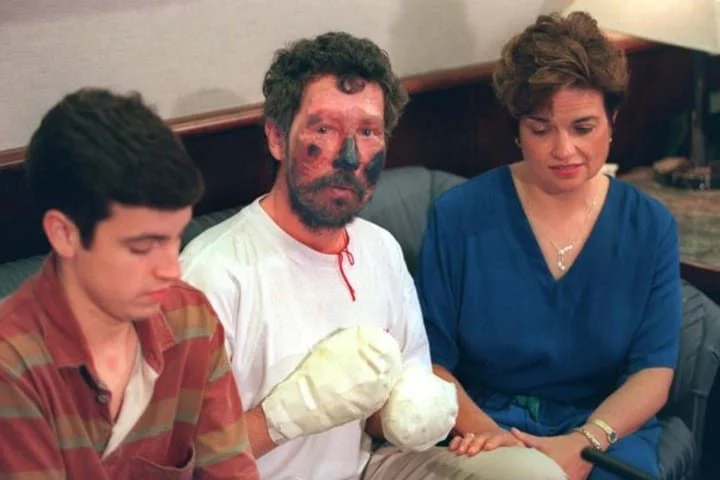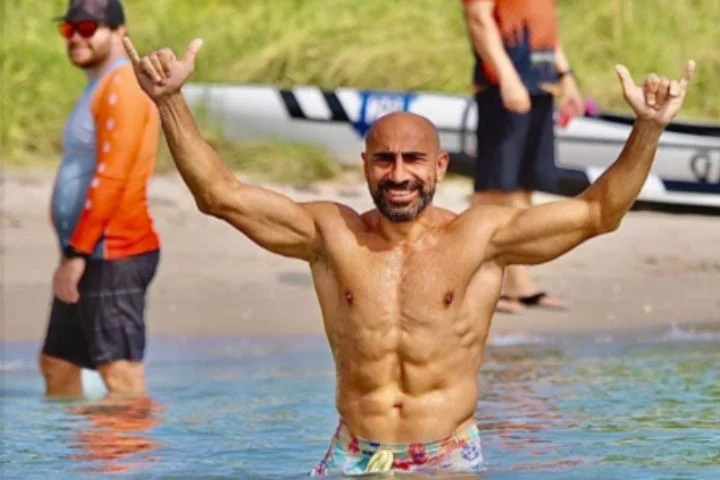Over a ter*rifying eighteen-hour period, Everest would make every effort to eat Beck Weathers and his climbing companions. Due to exhaustion, exposure, and altitude sickness, Weathers started to become progressively insane as fierce storms k*illed off the majority of his squad, including its captain, one by one. He said, “I’ve got it all figured out,” at one point, then threw up his hands and fell into a snowbank, apparently dying, according to his team.
Journey to Moutain Everest
Weathers had been a mountaineer for many years and was on a quest to reach the “Seven Summits,” which involves climbing the highest mountain on each continent. He had already climbed a few of the Summits. But he was drawn to Mount Everest as the biggest challenge of all.
He was ready to give this ascent his full attention and push himself as far as it would take. He had nothing to lose after all; their marriage had suffered as a result of Weathers’ preference for the mountains over his family.
But, Weathers wasn’t considering his family. He ignored caution because he was so eager to summit Everest.
The wind blew as much as 157 miles per hour, with an average temperature of minus 21 degrees Fahrenheit. Yet on May 10, 1996, he showed up prepared at the foot of Mount Everest.
Rob Hall, a seasoned mountaineer, led Beck’s disastrous trek. Hall, a skilled climber from New Zealand who had conquered all Seven Summits, founded an adventure climbing firm. As he had already reached the summit of Everest five times, nobody else should be concerned about the climb.
On that morning in May, a total of eight climbers joined the journey. The team was optimistic, and the weather was clear. Although it was freezing. But, Beck Weathers and his team would soon come to understand just how challenging the mountain could be.
Disaster Strikes
Beck Weathers had undergone a standard procedure to treat his nearsightedness just before leaving for Nepal. His corneas had really undergone a procedure called radial keratotomy, which was the forerunner of LASIK, to alter their shape for better vision. Sadly, the altitude further damaged his corneas, which were still healing, leaving him nearly completely blind as night fell.
When Hall noticed that Weathers was blind, he barred him from climbing the mountain and told him to stay at the trail’s edge while he led the others to the summit. He would be picked up by them as they made their way back.
Weathers unwillingly agreed. He stood still as his seven comrades ascended to the summit. He was approached by several other groups as he descended, but he declined their offers to join their caravans, he kept his word to Hall.
Hall, though, never came back.
One of the team members became too weak to continue after reaching the summit. Hall, choosing to wait rather than leave him, eventually gave in to the cold and died on the slopes. His body is still frozen today, below the South Summit.
When Beck Weathers recognized something was amiss, about ten hours had gone. Yet, as a lone hiker by himself on the trail, he was left with no choice but to wait till another hiker passed by. A climber came down just after 5 o’clock and informed Weathers that Hall was stuck.
Hall’s fellow team leader Mike Groom was a knowledgeable and experienced guide who had previously conquered Mount Everest. He led Weathers along with him as they made their way to their tents to prepare for the long, icy night with the exhausted hikers who had once been his fearless crew.
Before they arrived at their camp, a storm that had started to develop on top of the mountain blanketed the entire region in snow and virtually eliminated their visibility. One climber compared it to being trapped inside a milk bottle as snow fell everywhere. When they searched for their tents, the group, pressed together, nearly fell off the side of the mountain.
In the process, Weathers lost a glove and started to experience the affects of the low temperatures and high altitude.
He stood up in the wind, holding his arms above him, his right hand frozen beyond recognition as his comrades crowded around to get warm. He started yelling and screaming and claimed to have the solution. He was then abruptly blown into the snow by a burst of wind.
The remainder of his squad was saved during the night by a Russian guide, but after taking one glance at Weathers, he decided he couldn’t be saved. Weathers was doomed to join the mountain’s custom of leaving its deceased residents there.
The following morning, a Canadian physician was dispatched up to find Weathers and Yasuko Namba, a Japanese member of his team who had also been abandoned. Namba was determined to be beyond saving by the doctor after removing a sheet of ice from her body. He was prepared to say the same thing when he saw Weathers.
Weathers is still Alive
By some miracle, around 4 p.m., Weathers emerged from his hypothermic coma.
Then he started to check his limbs. He claimed that when his right arm hit the ground, it made a wood-like sound. He felt a rush of adrenaline as he realized what had happened.
He managed to descend the mountain, tripping on feet that were nearly completely devoid of feeling and felt like porcelain. The climbers in a low-level camp were astounded as he entered. Beck Weathers was moving and speaking despite the fact that his face was blackened from frostbite and his limbs were probably never going to be the same. Further shock followed as word of his amazing survival story reached base camp.

Beck Weathers appeared to have returned from the de*ad.
His wife learned that her husband had died on the walk after the Canadian doctor abandoned him. Now, there he was, broken but still alive, in front of them.
Along with his nose, he also required the amputation of his right arm, the fingers from his left hand, and significant portions of both feet. Amazingly, surgeons were able to reconstruct his nose using skin from his neck and his ear. More amazingly, they managed to grow it on Weathers’ own forehead. After it had vascularized, they placed it where it belonged.
He retired from mountain climbing.





